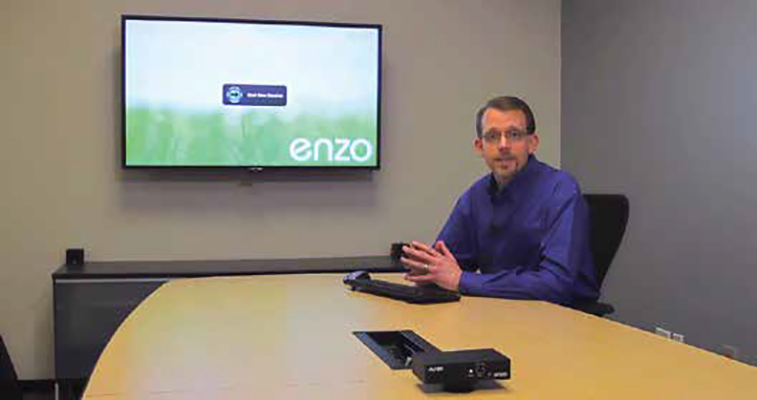It’s Here! (Sort of): Moving from The PC Age to The Device Age

The Pexip Infinity Version 6 offers new features to meet United States Federal Government security requirements. The latest version of the Infinity scalable meeting platform includes Active Directory (AD) integration, role-based authentication, and much more. A recent study by IT industry association CompTIA found that 70 percent of American organizations have made “some level of investment” to expand their mobility solutions, with mobile devices being at the top of the list. Still, just 30 percent have drawn up formal mobility policies, with only eight percent reporting that they have performed major changes to their workflow as a result.
Rare is the tech manager that doesn’t acknowledge the challenges surrounding BYOD. And, while perhaps not quite as rare, it’s not hard to get most IT professionals to admit that the shift from the PC age to the device age is going to keep on shifting.
But while BYOD is definitely here, it’s not totally, well… here, forcing tech managers to manage their way through this transition. And, according to Rob Balgley, CEO at the Denver, Colorado-based collaboration technology developer Mersive, it’s forcing AV and IT to work together in ways that they never have before. When one considers the sheer numbers involved in rolling out hundreds of displays that can be accessed via not only laptops, but mobile phones and tablets as well, he argues, connectivity isn’t viable with traditional AV technology. “It’s kind of a shotgun wedding in a sense,” he said. “You’ve got AV and IT standing at the altar together, not having had much of a prior relationship, depending on the organizational culture. But they’ve got to start working together because AV needs IT’s buy-in and support to connect all of these devices using IT-type technologies like Ethernet and Wi-Fi networks.” Software and wireless networks become the only feasible solutions. Unsurprisingly, this is what Mersive’s Solstice display management and collaboration software is based on, enabling multiple users to bring their own device to interact and collaborate together on a display.
With collaboration being top-of-mind in many organizations, there is no shortage of solutions. Christie Digital Systems USA Inc., in Cypress Calif., recently introduced Christie Brio Team, a plug-and-play unit that allows wireless content streaming from mobile devices and PCs, enabling users to share data, edit in real time, save revisions, and capture highlights for future meetings.
Extron Electronics, the interface, control, and switching manufacturer headquartered in Anaheim, Calif., recently introduced LinkLicense, which enables the use of both computers and mobile devices as the primary control interfaces in an Extron control system. Joe da Silva, director of product marketing, notes that LinkLicense can work in conjunction with the company’s IPCP Pro control processor and TouchLink for iPad app. “Users simply open the app or Web browser and have instant access to the room’s AV,” he explained, adding that LinkLicense requires a single license per system, rather than per user or per device.
Utelogy Corporation, based in Irvine, Calif., addresses AV control and management of both PC-age and device-age technologies through its cloud-based platform. Frank Pellkofer, CEO, sees it as an ecosystem that encompasses technologies that companies already have on hand. “It’s about software-defined AV and leveraging your own devices—devices that you already have in the enterprise—thus reducing the cost significantly of deploying AV systems, but also introducing new value that heretofore didn’t exist,” he said. “To me, BYOD and virtualization are synonymous. Yes, you’re bringing in a bunch of different platforms, and if you do it from a virtualization perspective you still have to manage them, but at least now it’s centralized.”
While CompTIA concluded that only eight percent of the 400 organizations it surveyed have modified their workflow as a result of their mobile strategies, Christopher Jaynes, Mersive’s founder and CTO, points out that BYOD, combined with collaboration technologies like Solstice, has the potential to transform the way people work not only when they’re outside of their workplaces, but on premises as well. “It’s allowing people to be more mobile in the workplace, which means that now you can have more mobile meetings, more ad hoc stand-up meetings,” he illustrated. “You can have opportunistic meetings in a hallway where there’s a digital signage screen in the hall that they can take over. To me, it’s a virtuous cycle: you enable BYOD in the enterprise, and that means that you’ve just now enabled new use cases for meetings and productivity, which means that people want to use those devices even more.”
A daily selection of features, industry news, and analysis for tech managers. Sign up below.

Paul Krizan, AMX senior product manager, demonstrates the Enzo Meeting Presentation System, which was designed to offer users the ability to access, present, and share information instantly, without a PC. Watch the video here: https://www.youtube.com/watch?v=bjxzU-tTMpQ These advantages aren’t negligible, but how can tech managers deal with managing BYOD when we are still also using more traditional technologies, such as PCs? According to Tom Barnett, director of marketing communications at control technology provider Crestron Electronics Inc. in Rockleigh, N.J., in today’s meeting space, you need to be able to support all sources, including mobile devices and laptops. “Your goal ought to be that the user can get their content up onto the display, regardless of the device it’s on,” he said. Crestron has addressed this with its DigitalMedia distribution system, which manages both point-to-point wired and network-based wireless infrastructures. Its AirMedia component enables presenters to share content wirelessly with their laptops, tablets, or mobile phones.
Barnett says that one of the issues in getting content off devices and onto a screen is compatibility. “If you are building an all-AirPlay infrastructure, you’ll have a difficult time with Android and Windows devices,” he said. “It’s important to find the solutions that are cross-platform. Ideally, once you get into the device age you have a single solution that can be used for laptops as well all of the mobile device platforms,” he said. He also notes that a lot of BYOD solutions feature built-in wireless access points, which can compromise security. “We encourage people to think very hard before adding a wireless access point that is not already in their enterprise security policy. You want to treat BYOD collaboration devices like standard network appliances.” AirMedia, he notes, can be managed similarly to other network assets like printers.

The InFocus Mondopad lets users present, annotate, & collaborate on a giant tablet with meeting participants in the room and around the world. You can share, view & control from your notebook, tablet (including the InFocus Q tablet) or smartphone. (Above) Mondopad’s interactivity features make it a useful tool during a live sports broadcast. The main challenge right now, in Pellkofer’s mind, is not so much technical as human. “I really think the hardest part of the whole thing is policy issues,” he said. If people bring their own devices to work, and those devices fail, is it the IT department’s responsibility to fix those devices? “Those are the kind of issues that are proving to be the most vexing right now.”
And some organizations still discourage bringing your own device to present. Barnett doesn’t favor such policies, which he sees as little more than red tape. The focal point should be enabling people to collaborate easily, with intuitive systems that make this happen. “It’s kind of like a policy on the use of company cell phones: you can write a rule that says don’t make personal telephone calls, but probably, if that’s the only phone that someone has in their pocket and they need to make a telephone call, they’re going to make it. A better policy is one that reflects how people live and work.”
Carolyn Heinze is a freelance writer/editor.
info
AMX
www.amx.com
Christie Digital Systems USA Inc.
www.christiedigital.com
Crestron Electronics Inc.
www.crestron.com
Extron Electronics
www.extron.com
Kramer Electronics
www.kramerus.com
Mersive
www.mersive.com
Pexip
www.pexip.com
WOWVision
www.wowvision.com
Utelogy
www.utelogy.com
WOW Vision’s Collab8

Users can now get the comprehensive collaboration feature set of WOW Vision’s Collab8 as a standalone Windows application for installation on a PC platform. Organizations wanting to use their own in-house brand of PC or existing machines dedicated to spaces, now have the ability to get mileage from their existing investment or work with a machine they are better acquainted with. The Collab8-SW software is an exact complement of the existing Collab8 appliance platform with the same features and functions. Users may now use a combination of the appliance and software versions to join a Collab8 Eco-System, with the new Nucleus Master server that allows viewing matrixing of the various Collab8 streams to other Collab8s, as well as recording each session.
Carolyn Heinze has covered everything from AV/IT and business to cowboys and cowgirls ... and the horses they love. She was the Paris contributing editor for the pan-European site Running in Heels, providing news and views on fashion, culture, and the arts for her column, “France in Your Pants.” She has also contributed critiques of foreign cinema and French politics for the politico-literary site, The New Vulgate.
